QR Codes in Education: Adoption Statistics and Impact Analysis
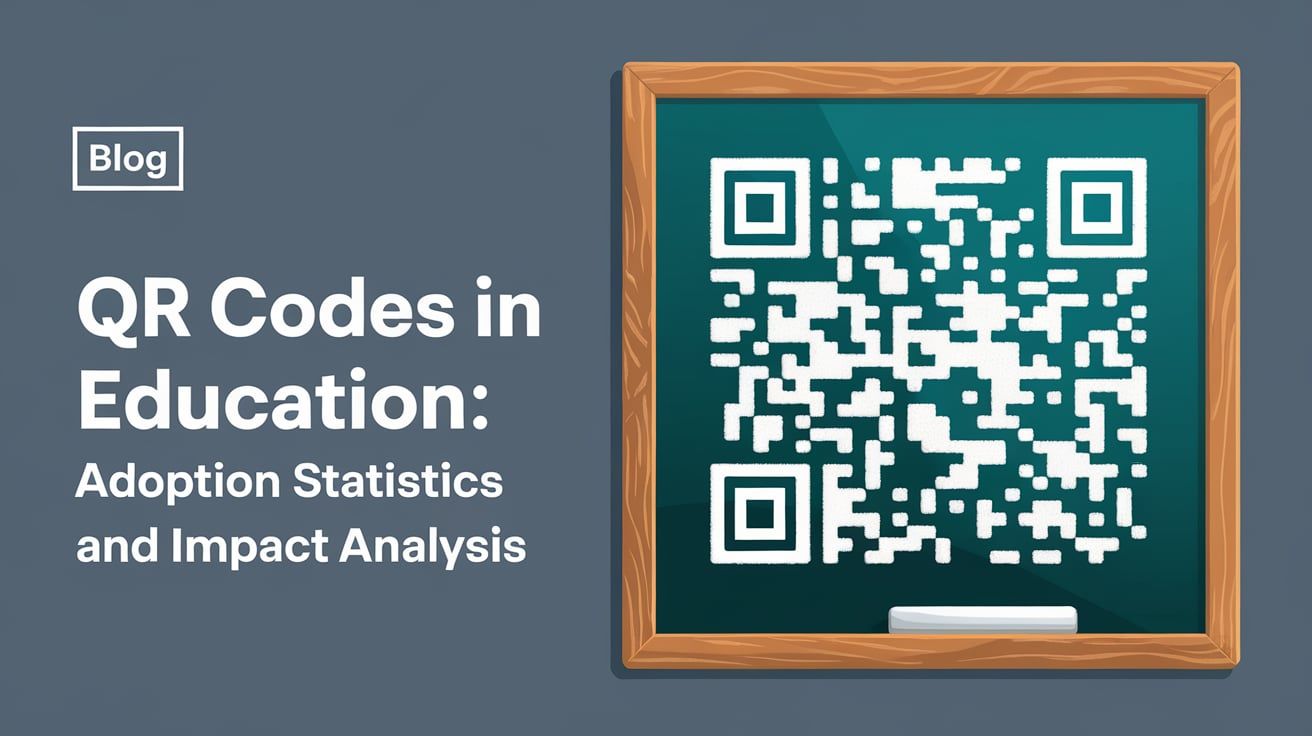
QR codes, short for Quick Response codes, are two-dimensional barcodes initially designed to track vehicles during manufacturing. However, with the advancement in technology, QR codes have become an integral part of our lives - making their way into various sectors, including education.
QR codes in education are effectively transforming traditional teaching methodologies. They act as a bridge between physical and digital learning resources, offering a seamless transition for students and educational institutions. Through a simple scan, students can access course materials, submit assignments, or participate in interactive learning activities.
But why is it essential to analyze the impact and understand the adoption of QR Codes in education? The answer lies within the ubiquitous presence of smartphones and tablets in today's digital-savvy generation, making QR codes an ideal tool for promoting interactive learning.
Let's dive deeper into the world of QR codes in education, studying their adoption statistics and analyzing their impact on the educational landscape.
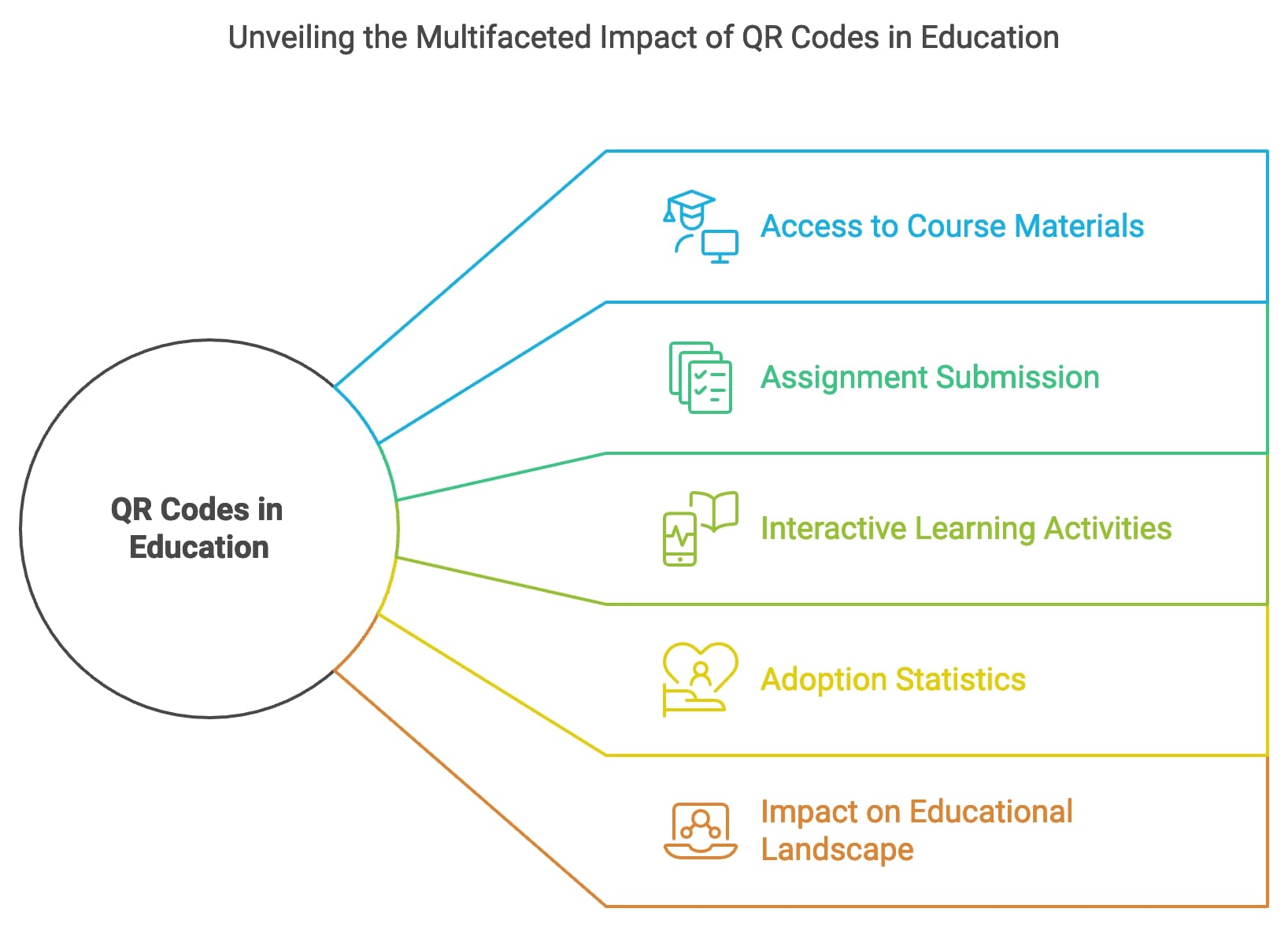
Rising Trend of QR Code Usage Globally
In the wake of the digital era, QR code usage has seen an unprecedented global rise. According to a QR Code Trends Report released by Uniqode, QR code creation skyrocketed by 238.06% between 2021 and 2023. This exponential growth signifies that QR codes are no longer an optional digital tool but rather an essential part of global communication and information sharing.
Embedding a table in this section which shows the rise of QR code creation over the years can make the data interpretation easier for the readers.
Such an impressive global trend has influenced the education sector. Increasing institutions are leveraging QR codes to enhance the learning experience and boost operational efficiency.
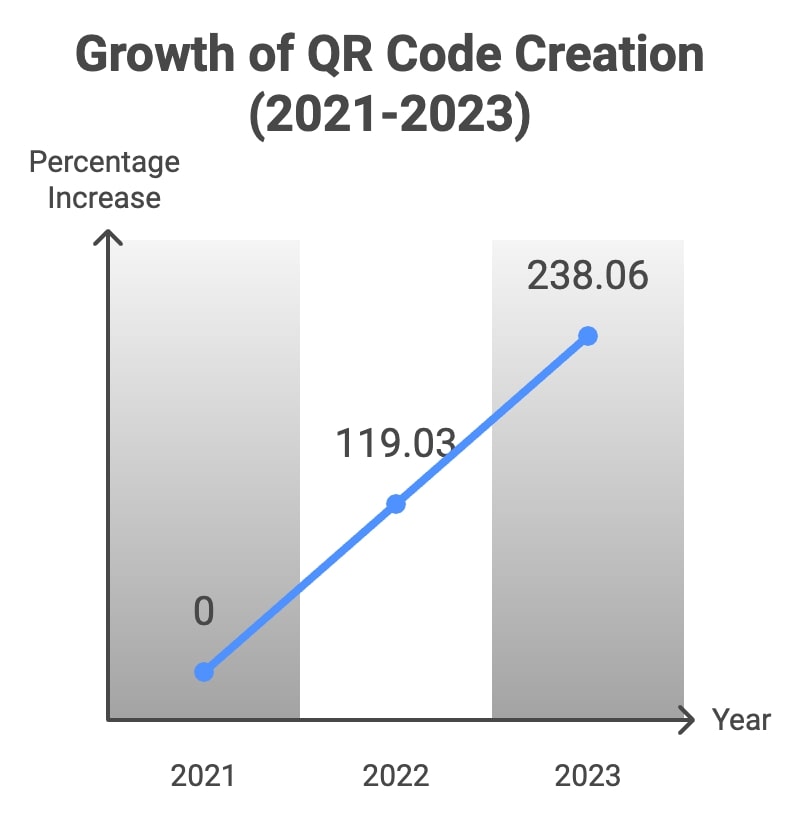
Stay tuned to investigate how the education sector has adopted QR Codes worldwide and the critical role they play in digitalizing education.
Adoption of QR Codes in Education
The acceptance and integration of QR codes into the education sector shouldn't come as a surprise. They offer an economical and efficient means to revolutionize the learning experience, especially in an era where digital education is the new norm.
According to EdTech Magazine, 45% of schools and universities in the United States have adopted QR codes for various purposes, such as accessing digital textbooks, submitting assignments, and offering virtual campus tours. This surge has occurred thanks to the versatility of QR codes in meeting educational needs across diverse areas.
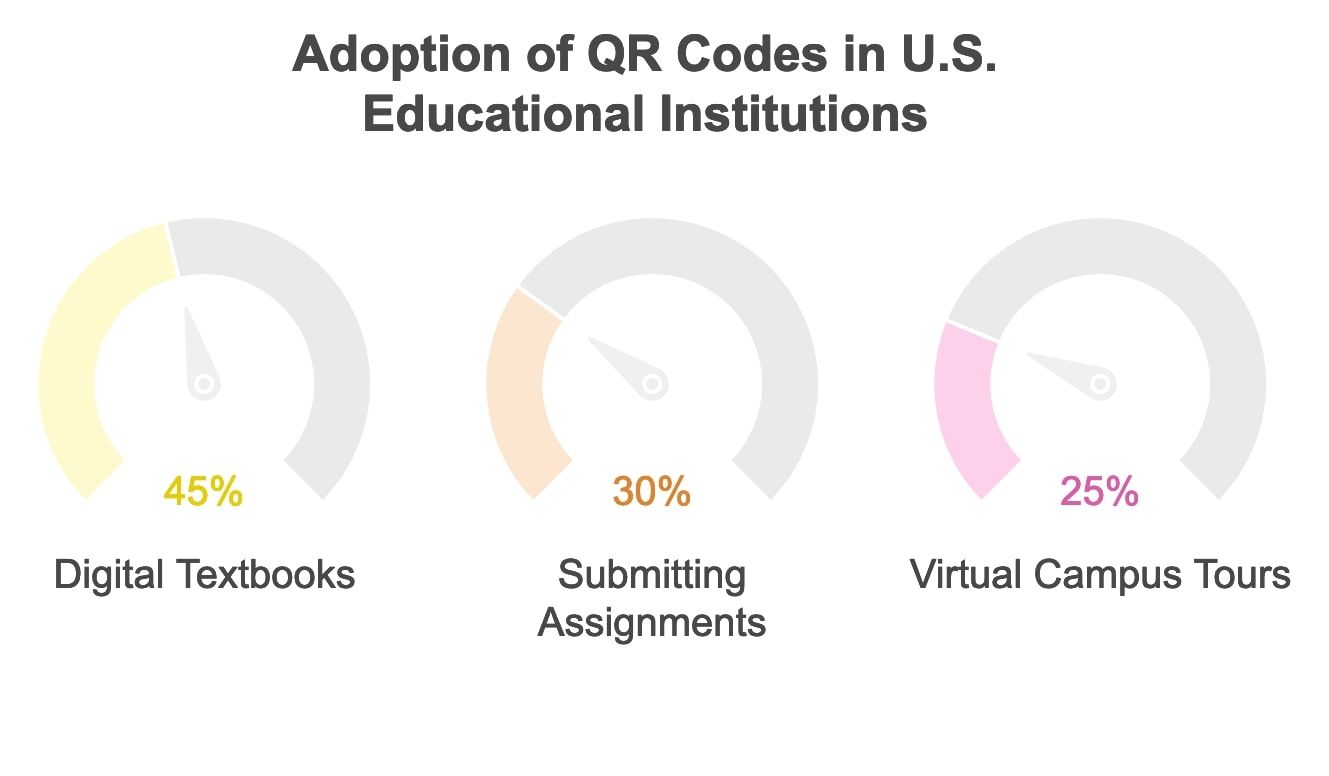
This rise in QR code usage in education isn't confined to the United States but is a global trend, with numerous institutions worldwide recognizing the capabilities of this technology.
Impact Analysis of QR Codes in Education
The adoption of QR codes in education has brought fundamental shifts to teaching methodologies and learning experiences. They have emerged as practical tools for information dissemination, simplifying access to educational material, and boosting interaction in the learning process.
Real-Time Access to Information
With QR codes, essential information is only a scan away, eliminating the need for lengthy web searches or navigation through complex digital systems. By scanning a QR code, students can easily access study materials, multimedia resources, and assignments, providing seamless connectivity between offline and online learning environments.
Enhanced Learning Experiences
QR codes have also found utility in creating interactive and engaging learning experiences. Teachers can embed QR codes in study materials that link to additional resources like videos, quizzes, and digital libraries, providing an enriched learning experience for students.
Streamlined Administrative Processes
In addition to enhancing learning, QR codes are also revolutionizing administrative processes in educational institutions. Teachers are using QR codes for attendance tracking, student registration, and even for sharing report cards, which significantly reduces paperwork and administrative hassles.
Despite the evident benefits, it's also essential to take note of some challenges. The primary one being the requirement of an internet connection and a scanning device, which might not be easily accessible to all students, particularly in less privileged areas.
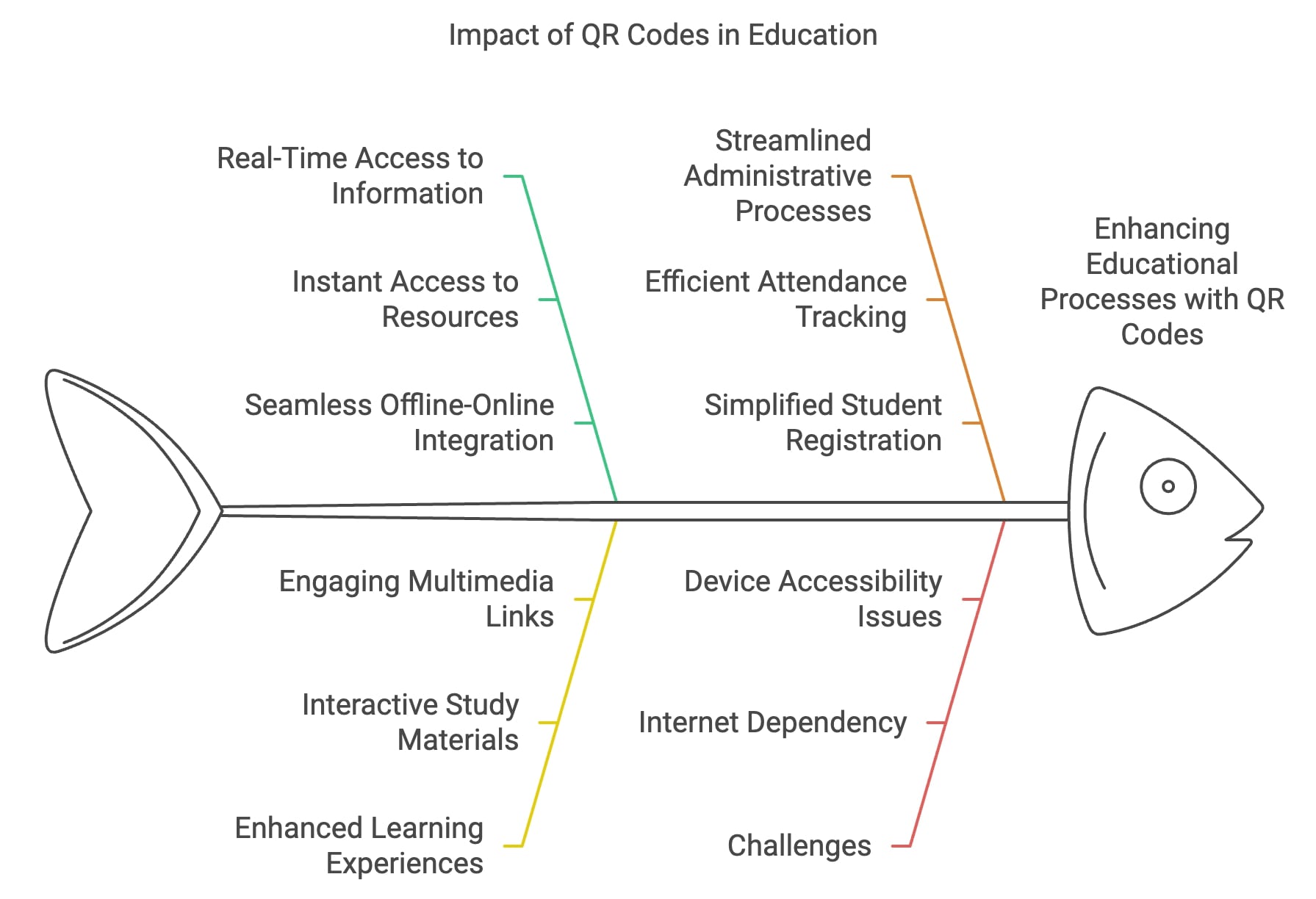
QR Codes in The Future of Education
Looking forward, the future appears bright for the integration of QR codes in education. Projections indicate a 30% increase in QR code usage in education by 2025, according to forecasts by EdTech Magazine. This rising trend is attributed to several factors.
Accelerated Digital Shift
The COVID-19 pandemic has fast-tracked a global shift towards digital platforms, and education is at the forefront of this revolution. As schools and institutions adapt to online and hybrid styles of teaching, QR codes stand out as a convenient and cost-effective tool to connect the physical and digital realms of education.
Expansion in Mobile Device Usage
The proliferation of mobile devices among students further fuels the integration of QR codes in education. As most smartphones come with an inbuilt QR code reader, it's easier than ever for students to scan QR codes provided in academic materials or educational resources.
Rise of Interactive Learning
The preference for interactive and personalized learning is on the rise in contemporary education. QR codes perfectly align with this trend by providing a platform to create enriching and interactive learning experiences. They can link to videos, interactive quizzes, and much more, offering more than just plain text-based learning.
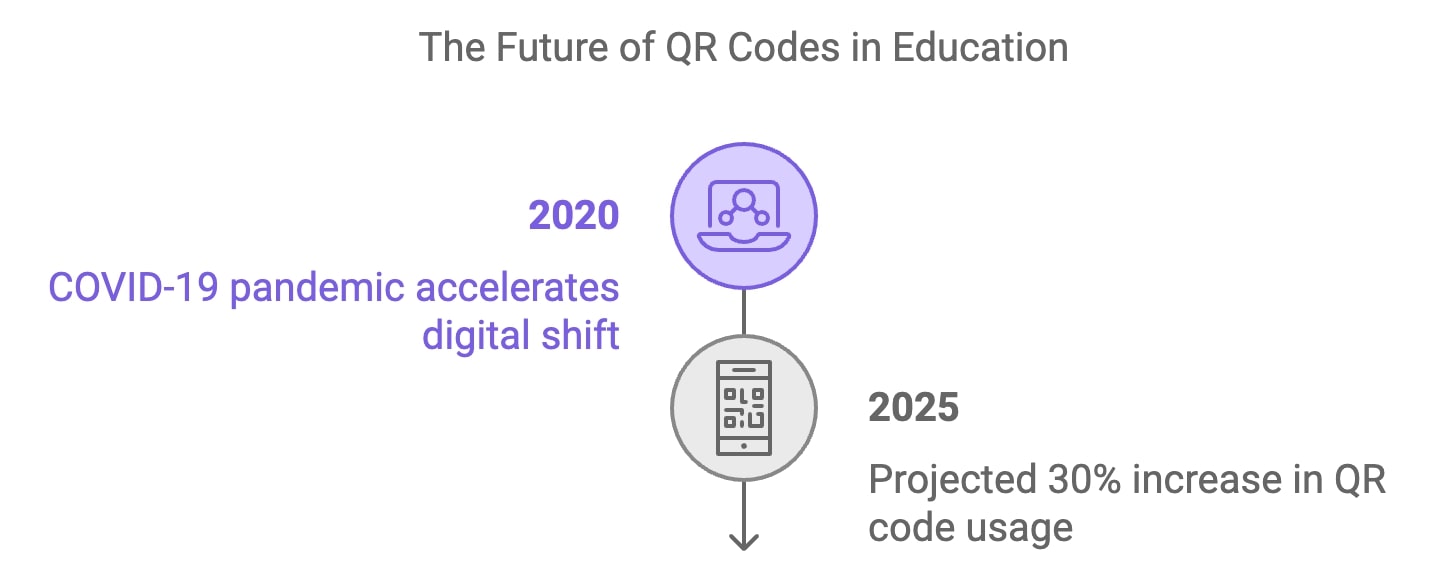
Gleaning from these factors, it is evident that QR codes will continue to play an integral role in shaping the future of education, making learning more engaging, accessible, and enjoyable.
Benefits and Challenges of QR Codes in Education
As seamless as the integration of QR Codes into the learning paradigm might appear, like any technology, they present both beneficial and challenging aspects.
Benefits
Cost-Efficiency
QR codes are simple and inexpensive to generate, enabling even resource-constrained institutions to apply them widely. They eliminate the need for expensive hardware, making them a budget-friendly option for schools and universities.
Ease of Use
Scanning a QR code is straightforward and quick, increasing its acceptance among students and educators. The majority of smartphones can scan QR codes directly from their camera, eliminating the need for additional applications.
Versatility
QR codes can link to a wide variety of digital content, including websites, videos, PDFs, and more. This flexibility makes them particularly useful in the education sector.
Analytics Provision
QR codes track data like scan locations and frequency, providing educators with essential insights into students' interaction levels and study patterns.
Challenges
Despite these benefits, there remain a few challenges in the widespread incorporation of QR codes in education:
Internet Necessity
QR codes typically require an internet connection to access linked digital resources, which might not be available to all students.
Need for a Scanning Device
Though the majority of students now have access to smartphones, there might still be individuals who lack access to a necessary scanning device.
Security Concerns
Despite their ease of use and convenience, QR codes can be misused to link to harmful websites or download malicious files, posing a security risk.
Both benefits and challenges must be considered in the wider adoption of QR codes in education. The focus should be on maximizing the advantages and finding effective solutions to the accompanying challenges.
QR Codes in Education: Use Cases
Examining how QR codes have been applied within educational contexts further elucidates their growing significance. Here is a deeper look into the varied use cases of QR codes in education:
Accessing Study Material
With QR codes, textbooks and study guides become interactive. Educators can incorporate QR codes next to topics, which, when scanned, direct students to additional resources that supplement the information in the book.
Streamlining Assignments and Examinations
QR codes are also transforming how assignments and examinations are conducted. A QR code on an assignment sheet can direct students to a digital platform where they can submit their work, eliminating the need for physical paper exchanges.
Interactive Learning Experiences
Whether it's a historical documentary, a science experiment, or a mathematical visualization, QR codes can link to multimedia resources that can greatly enrich learning.
Attendance Tracking
Teachers can generate a unique QR code that students can scan on arrival, automatically marking them present. This process eases attendance-tracking efforts and saves time.
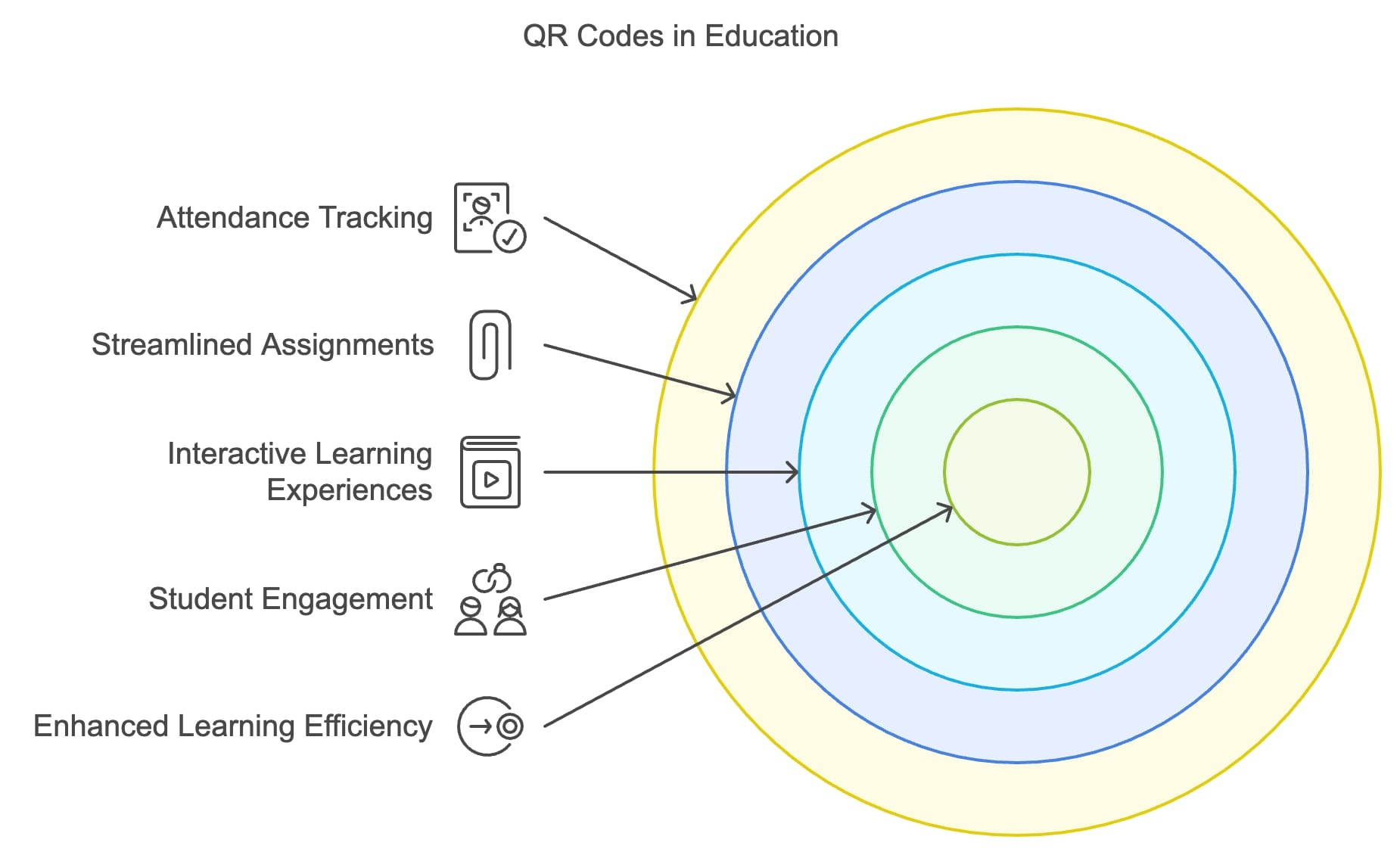
Despite their diverse applications, the goal of QR codes in all these use cases is the same: to enhance student engagement and make learning more efficient.
Utilizing QR codes this way can greatly enhance and expedite the learning process, providing real-time access to resources, streamlining administrative tasks, and fostering an interesting, interactive learning environment.
The Significance of QR Codes in Distance Learning
While the benefits of QR codes in traditional, in-person education are clear, their impact in the world of distance learning is just as significant, if not more so.
Breaking Geographical Boundaries
With QR codes, all educational resources can be accessed digitally, from anywhere in the world. Consequently, students in remote areas or unable to attend classes can also participate in the learning process without constraints.
Facilitating Asynchronous Learning
In distance learning, one major feature is the ability to learn at one's own pace. QR codes support this by giving students immediate access to study materials at any time, allowing them to learn at their convenience.
Maintaining User Privacy
With the rise of virtual classrooms, ensuring the privacy of students' information is crucial. QR codes, when utilized properly, can transmit data without revealing personal details, thus respecting users' privacy.
This lens into the crucial role of QR codes in distance learning underscores how this technology is redefining the parameters of education.
Conclusion: QR Codes - The Future of Education
Given the exponential growth and widespread adoption of QR codes in education, it's evident that they are not just a temporary trend. Instead, QR codes are here to stay, with endurance that will sustain well beyond the pandemic-driven shift to digital education. They've carved a niche for themselves as user-friendly, cost-effective, and efficient tools that cater to both traditional and remote learning contexts.
As digital natives continue to face an increasingly interconnected world, the convenience of accessing information with a simple scan matches their pace. QR codes resonate with the digital generation's pulse, making education more appealing, interactive, and impactful.
As we move forward, the potential directions for QR codes in education are abundant. Whether it is virtual field trips, instant access to augmented reality experiences, or streamlined administration, the boundaries of QR code usage in education are yet to be explored fully.
Despite some challenges, such as the need for internet access and scanning devices, the continual technological advancements will likely mitigate these potential obstacles.
In light of these conclusions, it's prudent for educators globally to familiarize themselves with QR codes, embracing them as an integral part of the educational toolkit as we navigate through the 21st Century.
Frequently Asked Questions (FAQs)
In this section, we aim to answer common questions related to the use of QR codes in education.
What is a QR code and how does it work in education?
A QR code, or Quick Response code, is a type of barcode that stores information as a series of pixels in a square grid, which can be read by an imaging device like a camera on a smartphone. In education, QR codes can link to digital content such as websites, audio files, videos, PDFs, or images, thereby enhancing the learning experience by instantly providing access to supplementary resources and streamlining various administrative tasks.
Do all smartphones have a QR code reader?
Most modern smartphones come with an inbuilt QR code reader, often integrated within the camera app. If not, numerous free apps are available for download to scan QR codes.
Do you need an internet connection to scan a QR code?
While scanning a QR code does not need an internet connection, you will require an internet connection to access the content or the link embedded in the QR code.
Are QR codes in education only useful for remote learning?
No, QR codes can greatly enhance both in-person and remote learning experiences. In a traditional classroom setting, QR codes can link to additional educational resources, interactive quizzes, and augmented reality experiences. In a remote learning environment, they ensure easy and quick access to study materials, assignment submission platforms, and much more.
How do schools and colleges use QR codes?
Schools and colleges use QR codes to provide fast access to learning material, distribute assignments, track attendance, and even manage school libraries. They can significantly lessen the administrative overhead and streamline the way information is shared.
What is the future of QR code usage in education?
The use of QR codes in education is projected to increase significantly in the future, with a projected growth of 30% by 2025. With advancements in technology and amplified efforts towards digital transformation in education, QR codes will find myriad applications ranging from virtual reality field trips to instant feedback systems and highly interactive learning modules.
Check other articles you may want to look:
United Kingdom QR Code Usage Trends 2024

